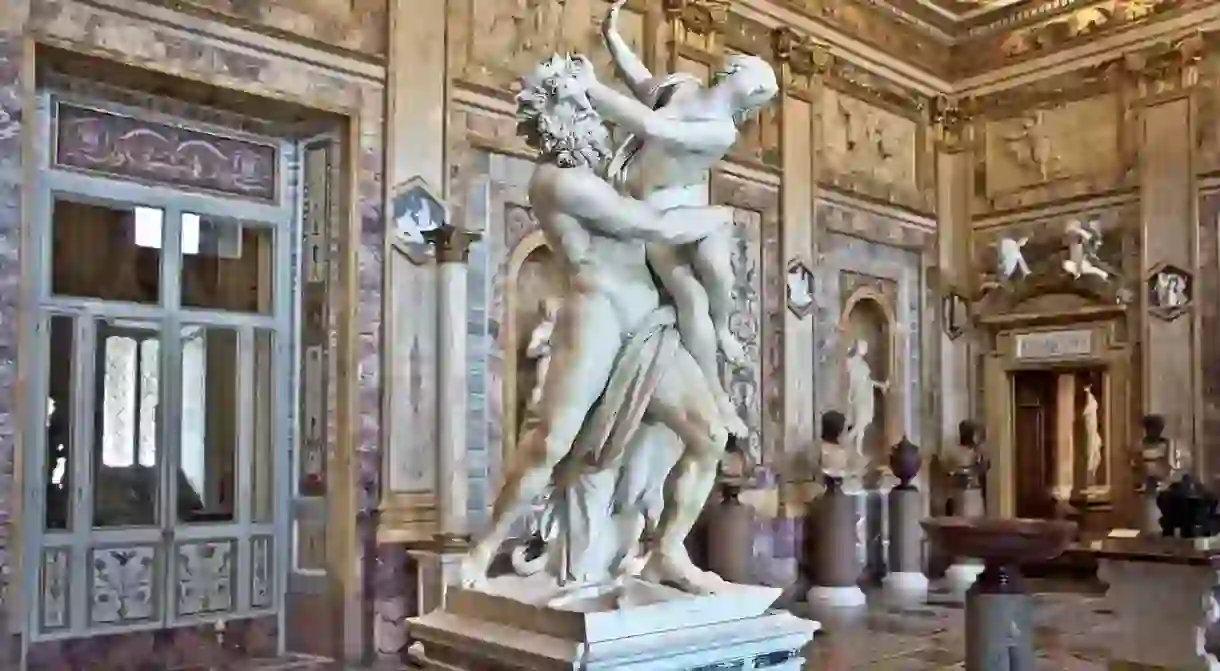Rome's Galleria Borghese in Important Artworks

The Galleria Borghese is one of Rome‘s most stunning museums. The 17th-century villa in the lush Borghese Gardens houses an astonishing collection of art, sculptures and antiquities that was started by Cardinal Scipione Borghese, nephew of Pope Paul V and patron of many famous artists. Here are the top five important pieces to admire.
The Rape of Proserpina by Bernini (Room IV)
Scipione Borghese was a patron of the Baroque sculptor and architect Gian Lorenzo Bernini and the museum showcases several of his works that can be admired up-close. One of the most striking is The Rape of Proserpina, a depiction from Ovid’s Metamorphoses, which shows the moment the Proserpina, the daughter of Ceres and Jupiter, is abducted by Pluto, king of the underworld. The remarkable statue, which dates from 1621-22, was completed when Bernini was just 23 years old and is famed for the way in which the artist achieved texture and a sense of movement in the marble.

Portrait of Pauline Bonaparte as Venus Victrix by Canova (Room I)
This scandalous semi-nude work shows Pauline Bonaparte (sister of Napoleon and wife of Camillo Borghese) in the role of the goddess Venus Victorious. It was commissioned by her husband in 1805 and sculpted by the famous neoclassical sculptor Antonio Canova. At the time, nude statues of the aristocracy were rare and reactions to the work were extreme. The base contains a wooden mechanism which allowed the sculpture to rotate without spectators needing to move. However, it is said that Prince Camillo only allowed close acquaintances to view the revealing work, and only by candlelight.
David with the Head of Goliath by Caravaggio (Room XIII)
Scipione Borghese was a great patron of Caravaggio‘s work and his six paintings in the Galleria Borghese span the artist’s life and reflect events that occurred during his time in Rome. This depiction of the story of David and Goliath was commissioned by the cardinal himself and is thought to date to the time after 1606, when Caravaggio killed a man and was sentenced to death by the Pope, causing him to flee the city. The dark nature of the work is thought to be an admission of guilt and remorse, with the head of Goliath (and possibly also that of David) believed to be a self-portrait.
Sacred and Profane Love by Titian (Room XX)
This 1514 allegorical painting by Titian is believed to have been commissioned for a wedding, owing to the coat of arms shown on the sarcophagus and the figure dressed in white. However it has been the subject of many interpretations, as scholars debate the real meaning of the two main figures and the contrasts between them. Theories include the contrast between eternal and temporal values, or even wise and foolish virgins. The present name of Sacred and Profane Love appeared in 1693, and gave rise to the belief that the figures are the personification of these Neoplatonic concepts. In 1899, the wealthy Rothschild family attempted to buy the painting, offering four million lire (more than the total value of the museum and all the works within it), however the offer was refused.

The Deposition by Raphael (Room IX)
Also know as The Entombment, this 1507 painting by Raphael was completed when the artist was just 24 years old and is one of several works by the artist on show at the Borghese. The painting was commissioned as an altarpiece by a Perugian noblewoman, Atalanta Baglioni, in memory of her son Grifonetto, who was murdered in 1500. The faces of suffering and despair allude to the family’s grief, while the depiction of the swooning Virgin Mary on the right of the painting is a reference to the patron herself. It is thought that the face of Grifonetto is shown on the central figure turning away from the viewer.
Did you know – Culture Trip now does bookable, small-group trips? Pick from authentic, immersive Epic Trips, compact and action-packed Mini Trips and sparkling, expansive Sailing Trips.













